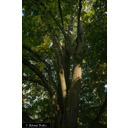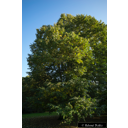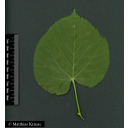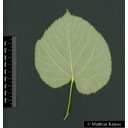Useful information about the taxon (species, subspecies, variety...)
Tilia tomentosa Moench 1785
Malvaceae
(APG IV)Silver Lime, Silver Linden
Taxon concept: The Plant List (2010)
Distribution: Southeastern Europe; Turkey, Syria
Tilia tomentosa Moench - Accepted: Tilia tomentosa Moench bei The Plant List (2010); Familie: Malvaceae (APG III)Tilia tomentosa Moench - Accepted: Tilia tomentosa Moench bei The Plant List (2014), version 1.1; Familie: Malvaceae (APG III)Tilia tomentosa Moench - Accepted: Tilia tomentosa Moench bei The Plant List (2014), version 1.1; Familie: Malvaceae (APG IV)Tilia tomentosa Moench - Accepted: Tilia tomentosa Moench bei BfN Checklist Flora DE; Familie: Malvaceae (APG IV)Tilia tomentosa Moench - Accepted: Tilia tomentosa Moench bei World Flora Online - APG IV (Angiosperms); Familie: Malvaceae (World Flora Online - APG IV (Angiosperms))
- Flowers
- hermaphrodite flowers; flowers with strong fragrance
- Flower ecology
- insect-pollinated (honeybees)
- Life form
- tree
- Leaves
- densely white tomentose pubescence on lower leaf side
- Foliage persistence
- deciduous
- Fruits
- slightly ribbed nut fruits in an infructescence accompanied by a bract
- Fruit ecology
- wind-dispersed (anemochorous)
- Natural occurrence (habitat)
- mixed deciduous forests (with beech, oak, ash and maple), coppice forests, forest steppes
- Vegetation typ and synecology (plant community)
- temperate, mixed broad-leaved deciduous forests
- Constraints according radiation (light)
- moderately shade tolerant
- Usage
- leaves and flowers are used for medicinal purposes: leaves are used in treatment of common cold and bronchitis; tea made from the flowers is antispasmodic, diaphoretic and sedative; traditionally, tea of lime flowers was also used to relieve vomiting; used as aromatic plant: the dried leaves are sometimes used as an adulterant for marjoram (Origanum majorana); wood used as sawlogs and veneer logs; used as chocolate substitute made from a paste of the ground fruits and flowers; as ornamental tree
Maurizio, Anna et al. (1982): Nektar und Pollen - die wichtigsten Nahrungsquellen der Honigbiene. 4. Ehrenwirth, München, 3, überabeitete Auflage; Pritsch, Günter et al. (1985): Bienenweide.. Neumann-Neudamm, Melsungen; Pritsch, Günter et al. (2007): 200 Trachtpflanzen erkennen und bewerten.. Kosmos, Stuttgart; The International Plant Names Index (2009). Published on the Internet http://www.ipni.org; Courtesy to IPNI, 2009. Exported from IPNI at date: 2009-09-22 20:17:51;
Diese Webseite verwendet Google Maps, um Karten und Standorte von Pflanzen in den Hohenheimer Gärten anzuzeigen. Dadurch werden unter Umständen Daten an Google weitergeleitet, was mit einer Verarbeitung Ihrer personenbezogenen Daten verbunden sein kann. Die Datenschutzerklärung von Google finden Sie hier: Datenschutzerklärung von Google
| Sex | Standort | Accession number | Planting year | Donation | IPEN | Lat. | Long. |
|---|---|---|---|---|---|---|---|
| Parzelle I | EG-I-087-19086 | 1968 | XX-0-HOH-EG-I-087-19086 | 48,7090238793 | 9,2079337151 | ||
| Parzelle L | EG-L-133-19087 | 1920 | XX-0-HOH-EG-L-133-19087 | 48,7082914141 | 9,2073600718 | ||
| Parzelle X | LG-X-221-19088 | 2000 | + | XX-0-HOH-LG-X-221-19088 | 48,705264 | 9,213899 | |
| Parzelle E | SP-EB-030-9968 | 2016 | XX-0-HOH-SP-EB-030-9968 | 48,7109840822 | 9,2117339962 | ||
| Parzelle N | SP-NB-099-10279 | 2018 | XX-0-HOH-SP-NB-099-10279 | 48,711759836 | 9,2165105755 |




